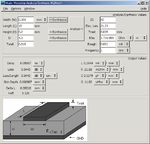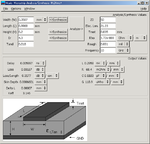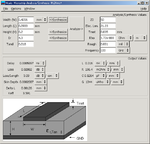Georgy.Moshkin
Full Member level 5
Hello all! Some time ago I used this online calculator: **broken link removed** (currently offline, but I have saved web page with calculator script). I noted that if all parameters kept constant then 50 ohm line width decreases with increasing frequency. Surprisingly linecalc tool in QUCS or ADS gives opposite result: 50 ohm line width increases with frequency.
For example: substrate thickness h=1mm, er=4.3.
Sphere.ne.jp calculator gives:
9mm at 5GHz
1.6mm at 10GHz
QUCS/ADS linecalc gives:
2mm at 5GHz
>2.2mm at 10GHz
Linecalc gives line width similar to well-known formulas for calculating microstrip line impedance. But I am intrigued with sphere.ne.jp calculator, it seems have different approach. Which result is correct? Should line width increase or decrease with increasing frequency?
For example: substrate thickness h=1mm, er=4.3.
Sphere.ne.jp calculator gives:
9mm at 5GHz
1.6mm at 10GHz
QUCS/ADS linecalc gives:
2mm at 5GHz
>2.2mm at 10GHz
Linecalc gives line width similar to well-known formulas for calculating microstrip line impedance. But I am intrigued with sphere.ne.jp calculator, it seems have different approach. Which result is correct? Should line width increase or decrease with increasing frequency?



